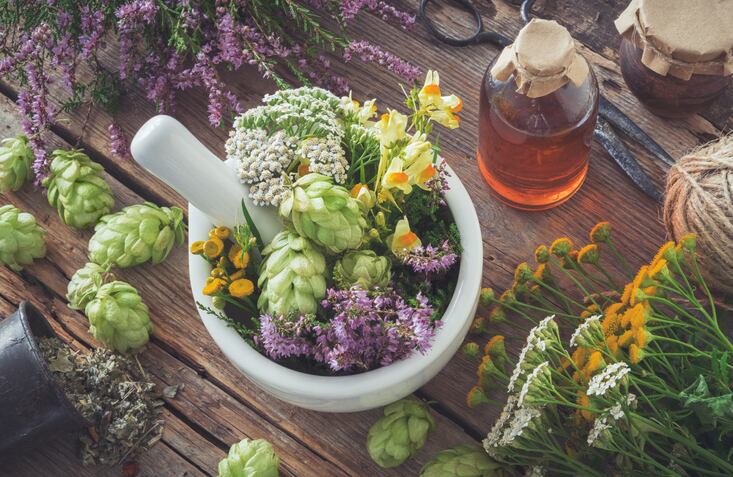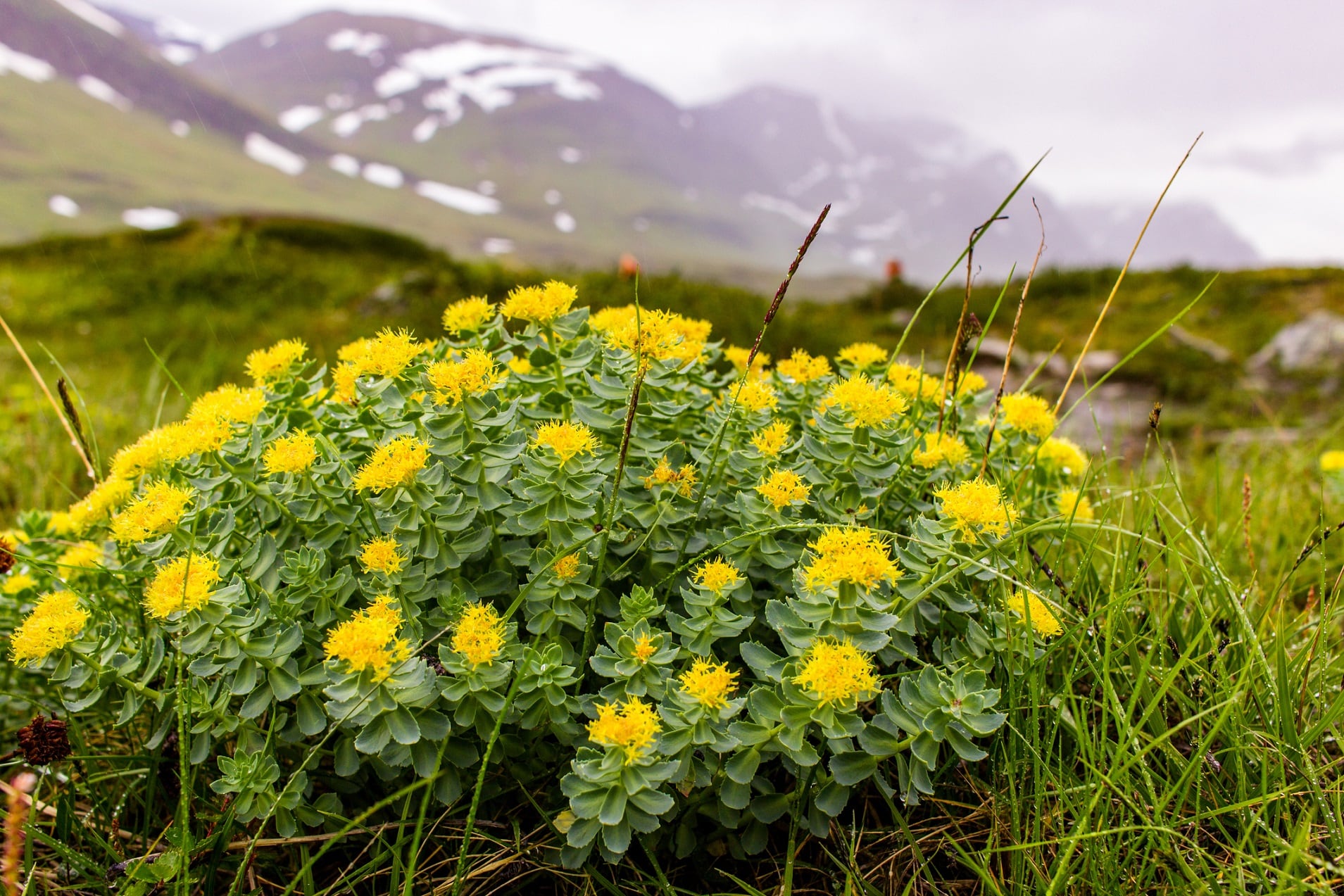Experts contacted by NutraIngredients-USA said the market disruptions and demand spikes caused by the global pandemic in the botanical supply realm are far from over. The unprecedented increase in some high profile botanicals with immune-boosting properties shined a spotlight on those ingredient and may have obscured issues for ingredients that appear farther down on the sales sheets.
“I anticipate that the immunity trend will continue in 2021, until we get ahead of the problem. However, the new problem that I predict is what I classify as non-pandemic driven ingredients or items that the pandemic didn’t drive up the sales significantly on, like chicory or angelica sinensis,” said Wilson Lau, vice president of botanical ingredient supplier Nuherbs.
Shipping backlog
Lau said shipping in 2021 may become a priority concern for suppliers. The shocks to the global shipping system caused by the pandemic, including demand spikes for some products and a periods of weeks or more in 2020 during which few if any cargoes moved, are still reverberating. For example, the Financial Times reported that the Port of Long Beach, CA, moved 506,613 containers in October 2020, a third more than it ever has. Shipping firm Hapag-Lloyd said empty containers have piled up in the wrong places making for a backlog that could take months to clear. And The Washington Post reported in late January that rates had risen to record highs.
Lau said those issues could hit some of the lesser known ingredients hard, because they were not stockpiled as avidly as were some others.
“These ingredient types are of particular concern because suppliers may have sold through inventory in 2020 and may not have restocked it to the same levels for a variety of reasons. As contract manufacturers and brands didn’t project the need for these items because they weren’t the problem children, like astragalus or elderberry, now when they want the materials it becomes a supply chain issue because the material is still at origin versus in the US ready to ship. And all the shipping lanes are clogged, whether it be air or ocean,” he said.
Trends that started in 2020 expected to thrive in 2021
Stefan Gafner, PhD, chief science officer of the American Botanical Council, said many of his group’s members were not as concerned about shipping issues as Lau seemed to be. Nevertheless, increased demand for certain ingredients would continue to characterize the market through at least the first half of 2021.
“I expect that sales of herbal ingredients that have immunomodulatory properties, are in the cough & cold category, or are known to contain large amounts of vitamin C will continue to see growth. It is also likely that herbs in categories such as anti-stress and adaptogens will continue to thrive in 2021,” Gafner said.
Beth Lambert, CEO of finished goods manufacturer Herbalist & Alchemist, agreed with Gafner and Lau about the broad strokes of where the market is going.
“We expect that consumers will continue to use herbs to strengthen their immune system — adaptogens, mushrooms (some of which are adaptogens) and immune system balancing herbs are expected to be strong,” she said.
“Consumers have come back to herbs for stress. 2019 was all about flirtation with CBD, but many have returned to ‘the other’ herbs for stress support,” she added.
High time for adulteration
Gafner said two main concerns that were prevalent in 2020 will carry over throughout this year.
“Concerns are in two areas, sustainability and quality. Higher sales volumes generally lead to more pressure on those herbs that are wild harvested, possibly exacerbating sustainability issues for plants where the natural supply is already dwindling,” Gafner added.
Gafner used rhodiola as an example. Experts recently raised alarm bells about the continued wild supplies of this increasingly popular adaptogen. Cultivation efforts, which are gaining pace in several locales, is seen as a possible solution. Gafner said a weather eye must be cast toward the ongoing effects of climate change on wildcrafted materials as well.
But high demand for a given botanical tends to bring out of the woodwork the sellers who would seek to cut corners, Gafner warned.
“The other area of concern is the sale of low-quality (e.g., highly diluted) or adulterated products. The prime example here is elderberry, where we have received several reports of adulteration from elderberry dietary supplement manufacturers and contract analytical laboratories. While elderberry sales have seen substantial growth increase even before the pandemic, COVID-19 has accelerated the growth and has led to shortages in the supply chain. I anticipate that this shortage in availability of elderberries will continue as it takes 2-4 years to get a good yield from elder trees, so any trees planted in 2020 will probably not bear large quantities of fruit next year. It may depend somewhat on the harvest yields, as the weather tends to be an important factor in the supply of medicinal plants,” he said.
Looking at supply resiliency on case-by-case basis
Lau of NuHerbs said the demand spikes are exerting different pressures in various parts of the supply chain. The relative abundances and growing patterns of various plants makes it hard to make a generalization about whether the increase demand in 2020 and through into 2021 has pushed the market over some kind of watershed.
“I hate to say this because it seems like a cop out, but it’s so ingredient dependent. Some wild ingredients can survive a huge spike, whereas others can’t even sustain the current demand. I think it’s essential to work with your supply chain partners to understand the particular situation with a specific botanical. I am a huge fan of the FairWild organization, and of using their assessment plan to determine how much and how to wildcraft,” he said.
Market forces govern switch to cultivation
Gafner said ultimately market forces—as opposed to strictly horticultural ones—may be the determinant of which plants are developed in cultivation.
“My hope is that for those materials that are becoming scarce in the wild, farmers will make increased efforts to get them under cultivation. In reality, the push to move to cultivated materials depends on the ingredient of interest. As long as wild harvested plants are less expensive than cultivated materials, the motivation to buy cultivated plants is limited,” he said.
“Going back to rhodiola, this is one of the reasons why many manufacturers prefer buying wild harvested since the price is substantially lower. In some instances, it’s also not so easy to start cultivating plants – for example, there have been some efforts to cultivate saw palmetto outside the southeastern United States, but these efforts have never proven economically worthwhile,” he added.
Getting the bioactives right
An added complication with cultivation is to ensure that the resulting material doesn’t just look like the wild grown forebear on the outside, but that it expresses the right suite of bioactive chemicals at the right concentrations so that it will have similar activity.
“There are still a number of plants where the ‘active constituents’ are not known, so the quality is measured by surrogate marker compounds,” Gafner said. During his time working with the personal care brand Tom’s of Maine, Gafner said the company had some success growing its own versions of wildcrafted ingredients, but it was much more art than science.
Lau said efforts to cultivate medicinal herbs tend to be more successful with annual plants, as there is no ‘aging’ process for these ingredients in which the plant can express higher concentrations of certain bioactive molecules.
“Annuals are harvested yearly or multiple times a year, versus something like ginseng, with which the bioactivity increases with time in the ground. For example, wild American ginseng can spend over 30 to 40 years in the ground versus cultivated material, which spends 3 to 4 years in the ground and if you are really ambitious, 5 years. It is just very different beast,” he said.
Lambert said her company has researched sourcing some herbs from cultivation suppliers. But care must be taken to ensure that the ingredients match up with the potency of wildcrafted items.
“When an herb is being grown in an ‘new’ geographic area, we have requested samples, made small batches of product with them, and have those comparatively tested to our traditional products at Rutgers University. A few examples over the years have been turmeric – where we had some local greenhouse growers with a good supply, but constituent levels were nowhere near our existing supplier. And in rhodiola, we evaluated rhodiola from many regions when we needed to replace a supplier. We evaluated Chinese sources, but only one North American supplier had rhodiola that was comparable to our previous supplier,” she said.
When a valuable ingredient becomes a pest
Lambert raised an additional issue, that being that bringing in plants from other regions can have unintended consequences.
“There are Asian herbs for which it would be great to have a domestic source. But the issue of them becoming a potential invasive species to our domestic plants has to be carefully managed,” she said.




